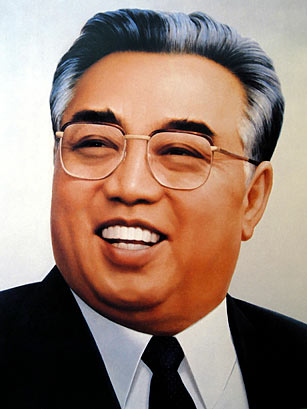
Kim Il-Sung, the father of communist North Korea, began his political life by fleeing Japanese rule of his homeland. After some Soviet training and membership in a local communist party, Kim returned to Korea during World War II and established a communist government in 1948. For the next half-decade, Kim ruled North Korea with a brutal iron fist. While promising great wealth for his country, Kim suppressed his people and fashioned a militaristic society. In 1950, he instigated the Korean War following an attempt to reunify the peninsula. (He was rebuffed by U.S. and UN forces.) After the war, the state-run economy, based on Kim's philosophy of "self-reliance," grew fairly rapidly but stagnated in the 1990s. When Kim Il-Sung died in 1994, his son Kim Jong-Il naturally succeeded him, continuing many of his father's heavy-handed policies. Today, the country is now desperately poor and heavily reliant on aid from China. While Kim Il-Sung's presence is still widely felt some two decades after his death, he is also still seen. Some say that the presumptive heir to lead North Korea, Kim Jong-un, looks eerily like his grandfather.